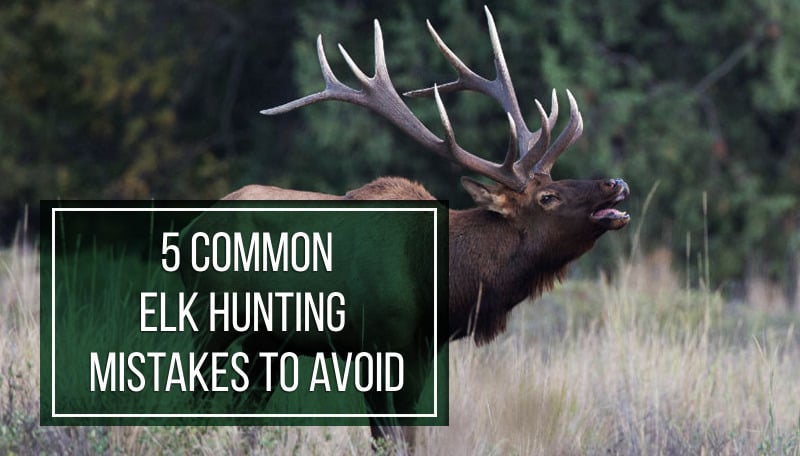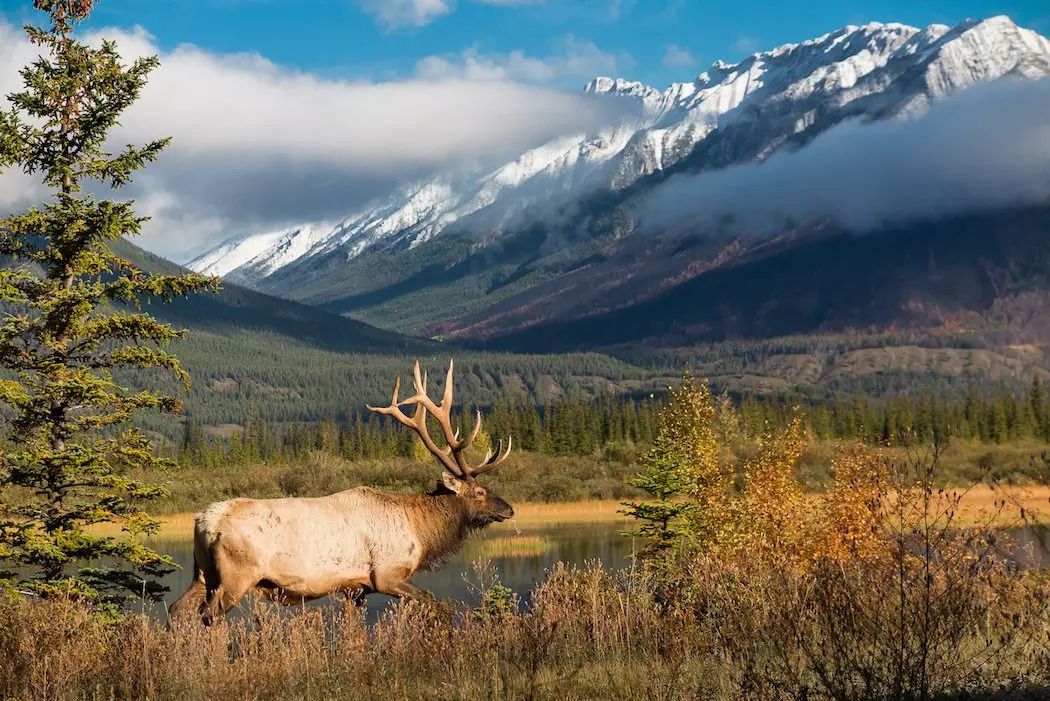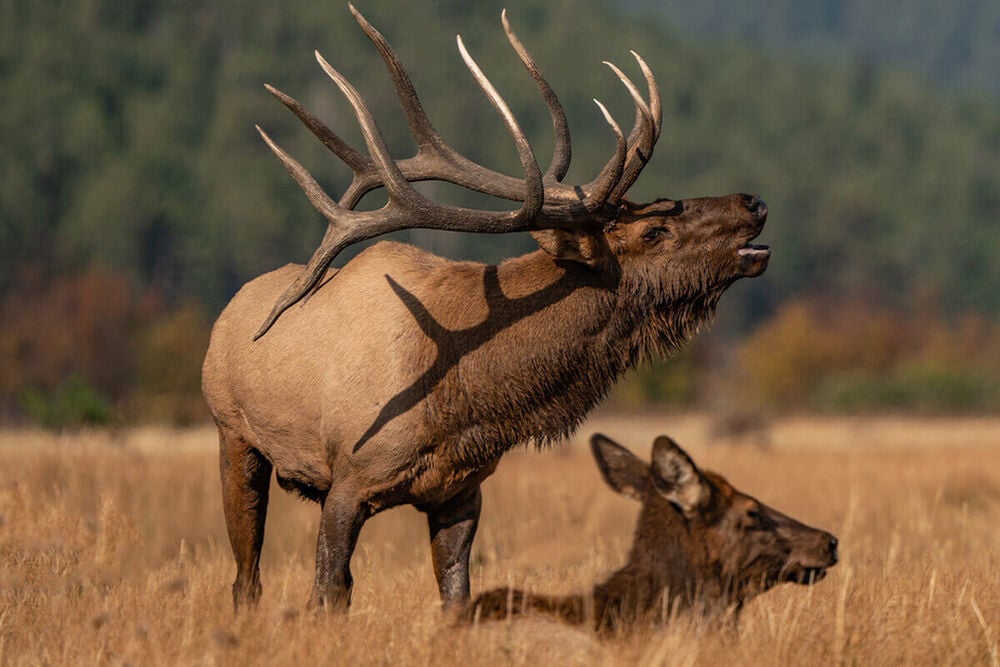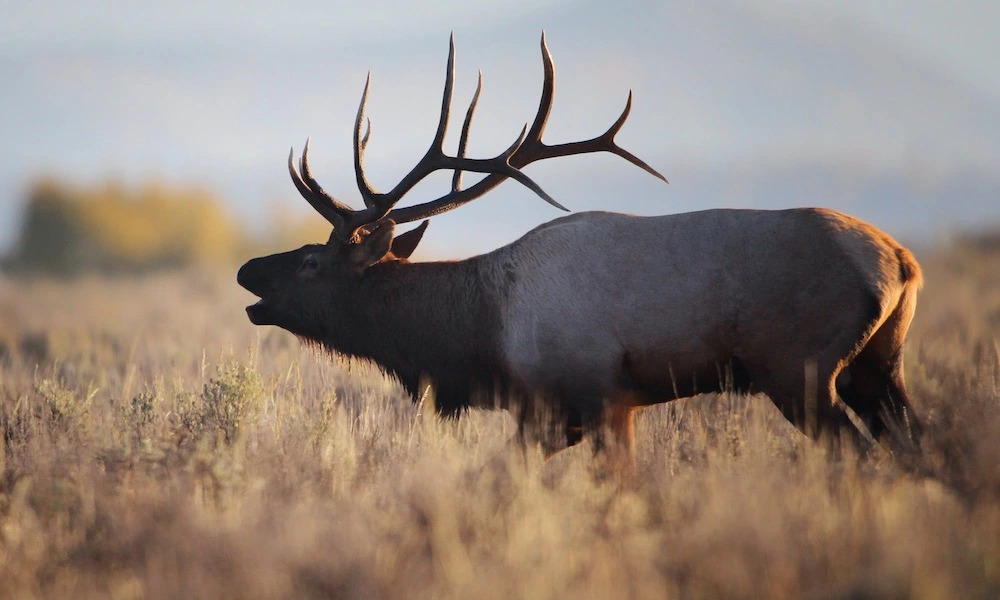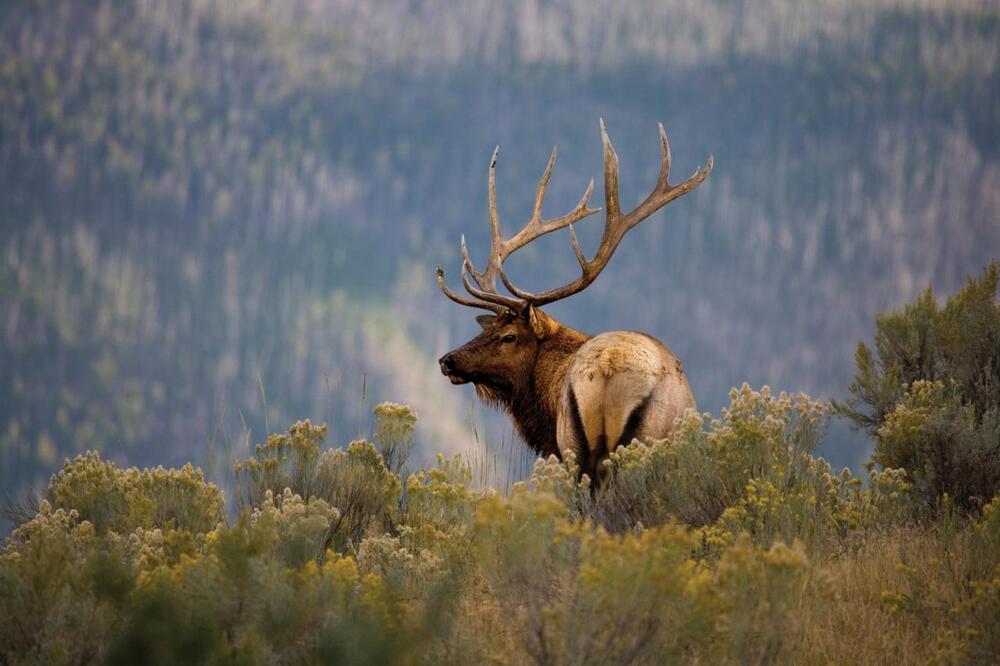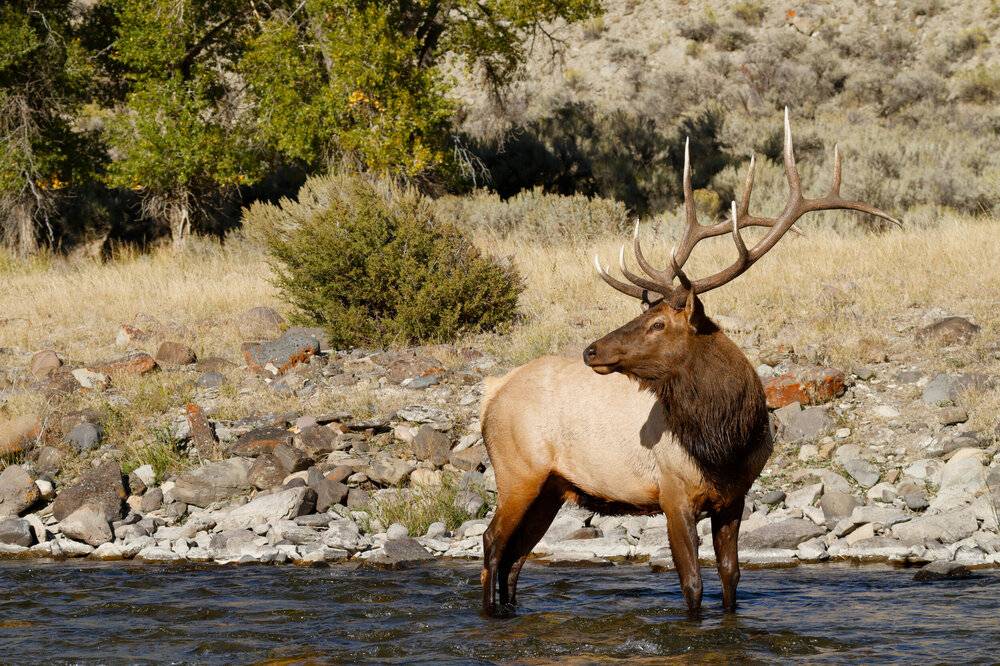Last Updated on
As any seasoned hunter will say, you can only get so far relying on luck. Hunting is first and foremost a test of skill, and luck, though not unimportant, plays second fiddle to it. However, all of us have had those days when it feels like every forest branch is against us. Why is it that the majestic bull seems to elude your grasp time and time again? You may scapegoat luck for your failure, but such a tactic doesn’t bring you closer to your trophy elk. The chances are, you might have done something wrong. Which is fine – we do things wrong all the time. The best thing about it is that you can stop doing so. Let’s take a look at the top 5 elk hunting mistakes that can turn an exciting hunt into a frustrating game of hide-and-seek.
Table of Content
Ignoring the Wind
Staying Focused on One Location
Not Having a Backup Plan
Bugling at the Wrong Time or Place
Being Poorly Prepared
Conclusion
FAQs
Ignoring the Wind
Wind can be a bunch of things. We welcome its cool drafts on a hot day and curse it when it blows away our papers. But in the world of elk hunting, it’s more often your enemy than a friend. That is if you don’t know how to adjust your strategy to its whims.
The main problem is that elks have an incredibly acute sense of smell. Some say it’s even better than a bloodhound’s. So, imagine if you’re upwind of an elk. Even if you’re perfectly camouflaged and silent as a shadow, they’ll pick up your scent and bolt off before you can say “Bullseye!” This is probably one of the most common elk hunting mistakes that left many hunters bereft of their trophies.
This is why it’s absolutely crucial to pay attention to the wind direction during your hunt. And it’s not enough just to know which way the wind is blowing and which way you should go. You see, wind patterns can change throughout the day, especially in mountainous terrains where thermals – upward drafts of air heated by the sun – come into play. If you ignore these changes, you might find yourself suddenly downwind of the elk, broadcasting your presence like a radio station.
Some hunters try to solve this complicated problem with a simple answer: scent masking sprays. Indeed, scent eliminators can help, but they aren’t foolproof. The same goes for all sorts of scent-masking apparel – all this stuff is just too inconsistent to be relied solely upon. An elk’s nose is finely tuned to detect the slightest hint of danger. It’s always better to hunt with the wind in your face, ensuring your scent is carried away from the elk.
And remember, elk also use the wind to their advantage. They often move against the wind to detect predators lurking ahead. This behavior can be frustrating for hunters who find their quarry constantly shifting with the wind, but understanding this will save you some nerves and also help you predict their movements.
So, next time you’re out on the hunt, don’t ignore the wind. Listen to its whispers and use it for your own advantage. The wind itself is an unbiased wanderer that animals learned to hear. Should you acquire the same skill, it very well might switch allegiances in your favor.
Staying Too Focused on a Single Location
Ever heard the saying, “Don’t put all your eggs in one basket”? Well, it’s reasonable not to put all your hopes in one location either. The problem with this approach is that it assumes elk are as predictable and routine-oriented as we are. Like many other hunting mistakes, this one fools you into thinking you know better. But the truth is, elk are constantly on the move, searching for food, water, and safety. Your chosen spot might look like elk heaven to you, but if it doesn’t offer what the elk needs at that specific time, you could end up waiting a long, lonely time for a bull that never shows up.
For example, let’s say you’ve found a watering hole that’s frequented by elk. Kudos to you. But what if there’s been heavy rainfall and there are plenty of other water sources available? The elk might decide to give that spot a miss. Or perhaps you’ve set up near a lush meadow. Surely the elk will come to feed, right? But what if there’s a new, tastier buffet of vegetation just over the hill?
The key to successful elk hunting is adaptability. Instead of sticking stubbornly to one spot, be prepared to move with the elk. Keep scouting, keep looking for fresh signs, and stay flexible. Use the knowledge you gain from each hunt to build a mental map of the area, noting where and when you see the signs of elk activity.
And remember, even the most promising location won’t guarantee success if the elk aren’t there. As the old saying goes, “You can’t hunt elk where there ain’t no elk.” If you’ve spent some time investigating an area and your calls got no answer, consider switching to another location. Keep moving, keep learning, and who knows? You might just stumble upon an even better hunting location.
Not Having a Backup Plan
Some elk hunting mistakes are not exclusive to elk hunting. This one is pretty common regardless of what type of game you pursue. Whether for laziness or overconfidence, many hunters set off on their trips having only one strategy in mind. Many of us fancy ourselves as the Daniel Boone of modern times, but let’s face it, sometimes things don’t go according to plan. You might have done your homework, you might have scouted the area beforehand, and you may have a plan as solid as a bull elk’s antler. But when it comes to practice, there’s a whole lot that can throw a wrench in your well-laid plans.
Maybe the wind changes direction, blowing your scent straight toward the wary herd. Maybe another hunter has set up camp in your prime spot. Or maybe the elk have decided to throw a curveball and move to a completely different area. The wilderness is unpredictable, and even the best-laid plans can come undone.
That’s where having a backup plan (or two, or three) comes in handy. Think of it as an insurance policy for your hunt. If Plan A goes awry, you can switch to Plan B without missing a beat. This might mean having alternative hunting spots, different strategies for different weather conditions, or even backup gear in case something breaks.
Having a backup plan also helps you stay mentally flexible. Too many hunters stormed off in frustration after seeing their plan yielded no results. Instead of panicking or getting aggrieved when things don’t go according to plan, you can adapt and keep moving forward. They say that insanity is doing the exact same thing over and over again expecting things to change. Don’t get stuck in a rut and come up with several strategies in advance.
Bugling at the Wrong Time or Place
Bugling is a common tactic used by elk hunters to mimic the call of a rival bull to draw out the dominant male for a face-off. Sounds simple and quite conniving. But here’s the catch – bugling at the wrong time or place can do more harm than good.
Firstly, let’s talk timing. Elk aren’t constantly in a bugling mood. During the early season, when the rut is still a way off, a bugle might seem out of place and alarm the herd. In this case, a soft cow call might be a more effective and less intrusive way to pique a bull’s curiosity.
Then there’s the issue of location. If you’re bugling in heavily hunted areas, chances are the local elk have heard it all before and aren’t falling for that trick again. They can become call-shy, meaning they become conditioned not to respond to bugles and may even move away from them.
So, what can you do to avoid these pitfalls? Mix up your calling strategy: respond to what the elk are telling you, and don’t be afraid to switch tactics if something isn’t working. You might want to walk a hundred or two feet from the heavily hunted area and try bugling from there. And remember, sometimes silence is golden. There’s a time and place for bugling, but there’s also a time and place for quiet observation and patience.
In the end, mastering the art of bugling is about more than just making the right noise. It’s about understanding elk behavior, adapting to the situation, and knowing when to blow that bugle and when to hold back. Learn this – and cross out one bullet from your possible elk hunting mistakes list.
Being Poorly Prepared at the Beginning of the Season
Finally, we have the least ingenious yet still frequent problem. Being poorly prepared at the start of the hunting season is one of the most common elk hunting mistakes that can trip up even the most experienced elk hunters. This preparedness covers a wide array of things: elk hunting calls for being physically fit, knowledgeable and well-equipped.
Let’s start with physical fitness. Hunting elk rarely commences within one day. It often involves long days of hiking in rugged terrain, sometimes at high altitudes. If your idea of exercise is walking to and fro your local grocer’s, then you’re going to find yourself huffing and puffing while the elk bounds away. Pre-season is the time to get in shape. Start a fitness regime that includes both cardio and strength training. And don’t forget to break in your new boots if you have them.
Next, there’s gear preparation. Your equipment should be checked, double-checked, and ready to go well before the season begins. This means making sure your weapon of choice is sighted in and functioning properly, your clothing is suitable for the anticipated weather conditions, and your backpack is stocked with essentials like food, water, and a first-aid kit.
Knowledge is another key part of preparation. Familiarize yourself with the hunting area. Know where the elk are likely to be during different times of the day and how they’ll react to changes in weather or hunting pressure. Brush up on your tracking skills, learn to read signs, and understand the behavior of elk during the rut.
Finally, remember to take care of the administrative side of things. It would be a shame to get everything in check only to learn your hunting license expired. Make sure you’re aware of the regulations in your hunting area, get your hunting license in order and plan through your potential harvest transportation.
Missed opportunities gnaw at you more than those you didn’t see coming. By being well-prepared for the hunting season you can avoid unnecessary hardship and even potential danger. So, next time you’re counting down the days to the opening of elk season, remember this: Preparation is the first step to success. Don’t leave it to the last minute. Start early, be thorough, and when the season finally arrives, you’ll be ready.
Conclusion
We’ve drawn up a list of five common elk hunting mistakes that can take away the pleasure from your hunts. And we have even come up with several ways to avoid them. Is there anything left to add? Probably there is, but we’ve kept you busy long enough already. Just make sure none of the things listed above spoils your hunts and be mindful of other hunters.
FAQs
What are the most common mistakes made during elk hunting expeditions?
The most common mistakes include ignoring the wind, focusing too much on a single location, not having a backup plan, bugling at the wrong time or place, and being poorly prepared at the beginning of the season.
Why is it important to pay attention to the wind during elk hunting?
Elk have a very keen sense of smell. If you’re upwind of them, they can detect your scent and will likely avoid the area, reducing your chances of a successful hunt.
When is the best time to bugle during an elk hunt?
Bugling can be effective during the rut when bulls are more aggressive. However, it’s important to adjust your calling strategy based on the behavior of the elk and the hunting pressure in the area.
When is the best time to bugle during an elk hunt?
Bugling can be effective during the rut when bulls are more aggressive. However, it’s important to adjust your calling strategy based on the behavior of the elk and the hunting pressure in the area.
